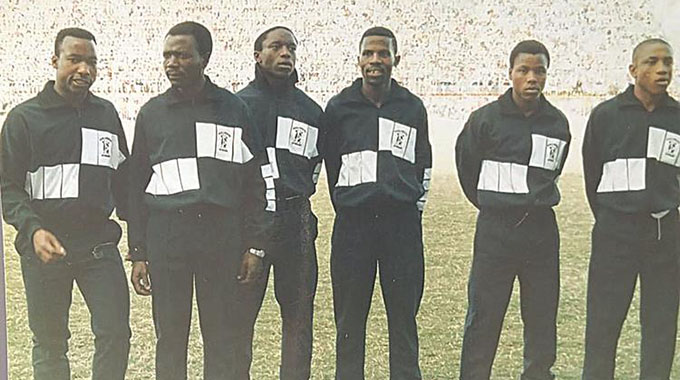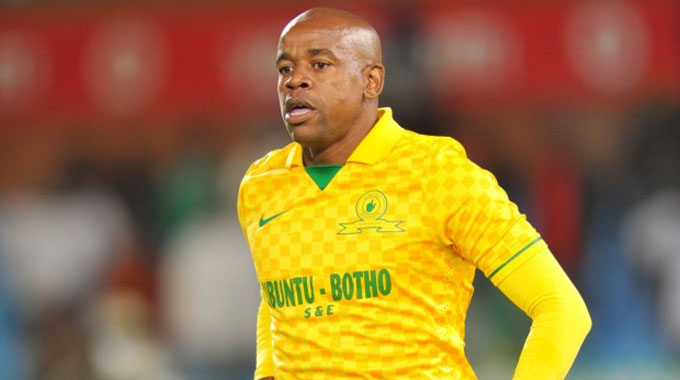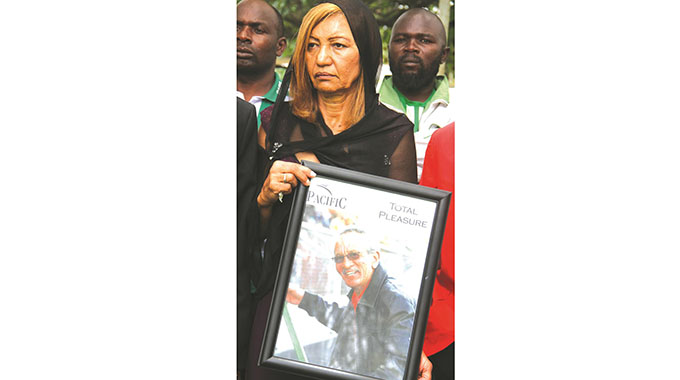Don’t cry for them Bosso, maybe, some things are just meant to be

Sharuko on Saturday
IT took 18 years for a Highlanders player to finally be crowned Soccer Star of the Year.
Mercedes Sibanda, as muscular and powerful in his prime as Hollywood’s action hero Rambo, ended that lengthy wait for Bosso in 1987.
A perfect physical specimen, Rambo was 18, when Bobby Clark, the Scottish coach who introduced him into the Bosso first team as a teenager, returned home in 1984.
Eighteen years later, at the relatively young age of 36, Rambo — dubbed by some of his fans as the finest right back in Africa at the prime of his athletic powers — died in 2002.
It’s now 18 years since this trailblazing bulldozing Bosso star passed away but his legacy — as both a fine servant for his club and country and an excellent footballer — lives on.
Eighteen years have also passed since a Highlanders player won the Soccer Star of the Year award.
Dazzy Kapenya, also known as the Texas Walker Ranger, was that player, back in 2002, during a period of success at the club when Bosso won four straight league titles.
He turned 44 on Wednesday.
And, every week he celebrates his birthday, and every year that passes by, the spotlight is once again cast on this question as to why we haven’t had another Bosso player following in his footsteps in winning the Soccer Star of the Year?
Don’t tell me they haven’t been good enough because Honour Gombami was good, Charles “Chief’’ Chilufya was probably better, Richard Choruma was amazing, Thulani “Biya’’ Ncube was as good a leader, and impressive a player, as they will ever come.
And Prince Dube last season, because of the advantage which his brilliance, playing for his country where he starred in the CHAN qualifiers should have given him in a tight race, should also have been a worthy winner of the award.
For goodness sake, how can domestic football, really sit down today and find peace, sleep well without being haunted by the demons inflicted by some of these judgments from hell, with the infamy that 18 years have now passed since a Highlanders player was last crowned Soccer Star of the Year?
How do we reconcile with our conscience, and tell each other that’s the way it is, or that’s the way it should be, when we can’t provide any justification, whatsoever, as to why no Highlanders player, in the last 18 years, has been named Soccer Star of the Year?
Especially, given the considerable number of dubious recipients, whose finest hour was crafted by selectors who appeared as if they had just emerged from a plane crash, too confused to be trusted to make a sober judgment, let alone understand the gravity of their mistakes.
Is this all just a product of the cruelty of fate?
Did Joel Ngodzo have to leave Bosso, to be crowned Soccer Star of the Year at CAPS United in his 30th year, when the quality of his game had clearly depreciated, when compared to the levels he used to showcase in his younger years at Highlanders?
CAPS United didn’t win the league championship last season, so this argument that it’s about helping a team become champions falls away, but Josta was still honoured as the Soccer Star of the Year.
What about the year Bosso were crowned champions in 2006, how then did the Soccer Star of the Year end up being won by Clemence Matawu, whose Motor Action side finished 11 points drift of Highlanders?
IT’S HARD TO UNDERSTAND, LET ALONE FIND JUSTIFICATION, TO SOME THINGS
Maybe, we can try and break it all down, using the rough formula that the club which provides the league champion has a very good chance of providing the Soccer Star of the Year, to get some meaning out of all this.
In the era of the Premiership, since 1993, Dynamos have won SIX league titles in ’94, ’95, ’97, ’87, 2011, 2012, 2013 and 2014 and only once in those years, in 2014 when Dennis Dauda won the gong, did a Glamour Boy not win the Soccer Star of the Year award.
Memory Mucherahowa (’94), Tauya Murewa (’95), Murape Murape (2007), Washington Arubi (2011), Denver Mukamba (2012) and Tawanda Muparati (2013) were all DeMbare players crowned Soccer Stars of the Year in the year the Glamour Boys were champions.
Murewa should also have won the ‘’97 Soccer Star of the Year had the selectors not lost their mind and went for Walter Tshuma in a protest vote against the controversial disqualification of another favourite, Edelbert Dinha.
Within the same period Bosso have won SIX league titles, just two fewer than DeMbare, in ’93, ‘98/’99, 2000, 2001, 2002 and 2006 but, in comparison with the Glamour Boys, only two of their players — Zenzo Moyo and Dazzy Kapenya — have been crowned Soccer Stars of the Year.
CAPS United have won FOUR league titles, during the same period, in ’96, 2004, 2005 and 2016, but the Green Machine have provided five Soccer Stars of the Year — Stewart Murisa (’96), Energy Murambadoro (2003), Cephas Chimedza (2004), Joseph Kamwendo (2005) and Hardlife Zvirekwi (2016).
Every year CAPS United have been champions, stretching back to 1979 when Shacky Tauro won the award, their player has been crowned Soccer Star of the Year while the likes of Murambadoro and George Nechironga even won the award when their team were not champions.
Whichever way one tries to look at it, that Bosso have not provided a Soccer Star of the Year in the last 18 years, just doesn’t make any sense at all.
Maybe, it’s the number 18?
Peter Ndlovu, the greatest Highlanders player of-all-time, and in my little book the finest Zimbabwean footballer ever, was 18 when he won the Soccer Star of the Year, on his own, in 1991.
He had won the same award, the previous year, as a joint winner with CAPS United striker George Nechironga, before assuming sole ownership of this prestigious gong the following year.
Only George Shaya, in 1975 and 1976, had won the same award twice in successive year with the Mastermind completing a hattrick of awards in 1977.
It’s a fair argument King Peter would also have completed a hattrick of awards, had he stayed in the domestic Premiership rather than move to England, as a mere 18-year-old in 1991.
Peter eventually left England in 2004, exactly 18 years after Moses Chunga, the footballer many usually mention when it comes to the argument who was actually Zimbabwe’s finest of all time, was crowned Soccer Star of the Year in 1986.
It took Highlanders 18 years, since finding their way out of Division Two, at the end of 1972, for them to finally complete their transformation into Zimbabwean football champions in 1990.
After winning the inaugural Premier title in 1993, and finishing second to their biggest rivals Dynamos the following year, Bosso appeared to lose their way in 1995, 1996 and 1997.
Having finished sixth in 1997, for the second successive season, 24 points behind champions Dynamos and 24 points above bottom club Gweru United, Bosso we’re clearly hovering in no-man’s land.
Some of the optimism and feel-good factor of the early part of the decade, when Bosso finally won the league in 1990, and won again in 1993, was beginning to fade away and being replaced with pessimism.
And, after the miserable campaign of 1997, when they won nine games fewer than DeMbare, and finished closer to Arcadia United, who occupied the last place in the safe zone, than the champions, something had to give.
It just couldn’t go on like this, 1997 had to mark the end of the decline, and the club’s fathers came together at the end of that year to plan how they could revive their team to be champions once again.
Whatever they said or did, or whatever they said, it just worked, and the rewards were immediate.
And, in the following campaign, Bosso returned to the top, winning four straight league championships, for the first — and only time — in the club’s history.
The year 1997 had brought home the challenges they were facing, and the wrong direction their beloved club was taking, and things had to change.
EIGHTEEN, THAT NUMBER, TOO MANY QUESTIONS, VERY FEW ANSWERS
Sadly, 18 years later, in 2015, Bosso were plunged into mourning again when one of their finest sons, Willard Mashinkila-Khumalo, a larger-than-life character who was loved across the nation, passed away.
For some strange reason, Willard never won the Soccer Star of the Year but, then, he isn’t the only one whose absence, on the roll of honour, continues to provike debate, and stir controversy, given the sizeable number of players, far less gifted than them, who got the award.
Stanford “Stix’’ Mtizwa, Madinda Ndlovu, Graham Boyle, Shadreck Ngwenya, David Muchineripi, Sunday Chidzambwa, Onias Musana, Max Tshuma, Robert Godoka, Byron Manuel, Achieford Chimutanda, John Phiri, Vitalis Takawira, Aleck Masanjala, Henry McKop, Francis Shonhayi, Ebson “Sugar’’ Muguyo, Joseph Zulu.
The Perfect Eighteen, the superstars who, somehow, by design or by default, never got a chance to be crowned Soccer Stars of the Year.
Their names, their pedigree, especially when compared to some of the Mickey Mouse winners we have seen being smuggled onto the roll of honour, as winners of the Soccer Star of the Year award, will always haunt this gong.
In 1972, Bosso were in Division Two, when on June 6 that year, a series of underground explosions at Wankie No.2 Colliery, left 427 workers dead, in one of the worst mining disasters in the world.
Twelve years later, in 1984, Barry Daka was lured from Hwange to become Bosso head coach as the foundation, which would eventually see the club become champions in 1990, 18 years after their flirtation with Division Two football, was laid.
Maybe, some things are just meant to be like that.
Back in 1972, when Bosso were in Division Two, when George Shaya became the first player to win the Soccer Star of the Year twice, a chartered Uruguay military plane, carrying a rugby team to Chile, crashed in the Andes.
And 33, of the 45 people on board, initially survived the crash but, after spending 72 days trapped on a mountain, only 16 were still alive by the time they were rescued.
In 2002, when a Bosso player last won the Soccer Star of the Year, 14 of the survivors of that Andes plane crash flew back to Chile and played the rugby match they had planned to play when tragedy struck in 1972.
When the Copiapo mining accident in Chile happened in 2010, starting an ordeal in which a group of miners would be trapped underground for 69 days, one of the miners checked their number and, just like in the immediate aftermath of that plane crash in the Andes, realised something special.
“There are 33 of us,” he announced. “Thirty-three, the age of Christ, this has to mean something. There’s something bigger for us waiting outside.”
On the 18th day, they managed to send a message to authorities on the surface that they were all safe and, after 72 days, they were all rescued alive.
Maybe, as Even Peron told us in her classic song ‘’Don’t Cry For Me Argentina,’’ some things are just meant to be.
To God Be The Glory!
Peace to the GEPA Chief, the Big Fish, George Norton and all the Chakariboys in the struggle.
Come on United!!!!!!!!!!!!!!!!!!!!!!!!!
Bruno, Bruno, Bruno, Bruno, Bruno, Bruno!
Text Feedback — 0772545199
WhatsApp — 0772545199
Email — [email protected], [email protected]
You can also interact with me on Twitter — @Chakariboy, Facebook, Instagram — sharukor and every Wednesday night, at 9.45pm, when I join the legendary Charles “CNN’’ Mabika and producer Craig “Master Craig’’ Katsande on the ZBC television magazine programme, “Game Plan”.








Comments